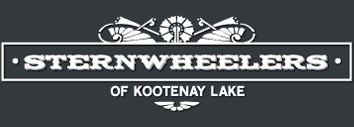- Français
- English
Nestled between the high Selkirk and Purcell mountain ranges, Kootenay Lake is an isolated but expansive body of water fed by melting snow. Over one-hundred kilometers long and in some places more than 150 meters deep, the lake covers much of the valley floor between the two mountain ranges. It is a major geographic feature in a region defined by high peaks and snow-charged rivers and lakes that dominate narrow valleys.
As the indigenous inhabitants of the region already well understood, the most efficient way for settlers to negotiate the challenging geography was by boat. Early surveyors and placer miners used indigenous canoes and guides. The great wave of European settlement that followed after the discovery of rich, hard-rock mineral deposits in the 1880s, was made possible by the development of a water-based transportation network of steamers and tugs. The first steam-powered vessel to navigate the water of Kootenay Lake arrived in 1884 and was little more than a rowboat with a steam engine attached. Within a few decades, at the height of sternwheeler travel in the area, ships had become floating palaces, with well-appointed staterooms and comfortable salons for enjoying the splendid scenery. Dining rooms catered to the most discerning tastes, with china and silver, outstanding service and attention to detail.
The passengers, new arrivals to the remote and rugged region, or miners returning to town with their hard-sought fistfuls of nuggets, were dazed by the abundance that met them on board the sternwheelers. This contrast between the region's surrounding wilderness and the appointed luxury of the boats was part of the romance of the period. And yet, the crews of the sternwheelers lived a gritty reality more than any romance, working sometimes seven days a week, serving meals to unwashed miners and well-dressed travelers alike, feeding boilers with wood and later coal, navigating the lake in all weather with deadheads, sandbars and currents to negotiate.
The development of the region's primary industries of mining and forestry, as well as its agricultural settlement were both made possible by the sternwheelers and tugs that negotiated the deep blue waters of Kootenay Lake, forging an important transportation network that carried people and abundant natural resources around the region.
THE BOATS
Explore the history of the sternwheelers on Kootenay Lake through the stories of the ships, examine the remaining images of them in their prime and their decline. View more »
STORIES
Read and listen to the histories of those who worked and traveled on the ships. View more »
ROUTE MAPS
Survey the historic routes and imagine a trip aboard with the thump of the paddlewheel and hiss of the boiler. View more »





